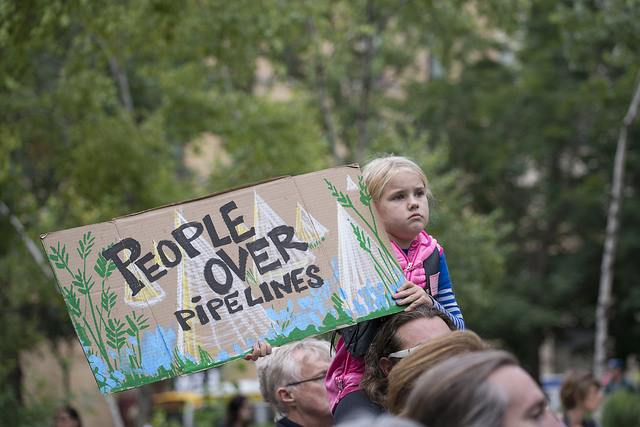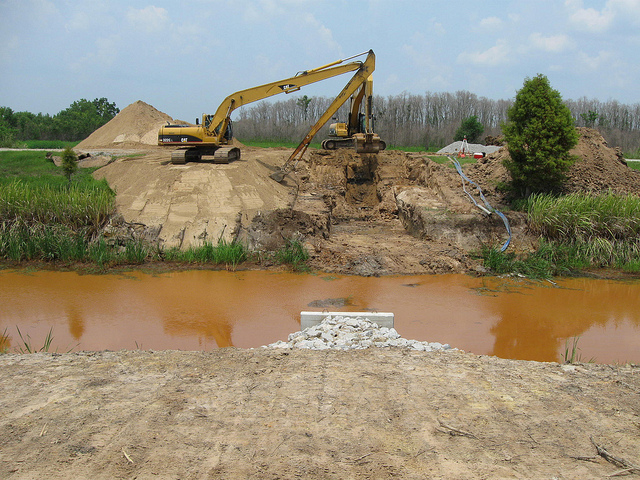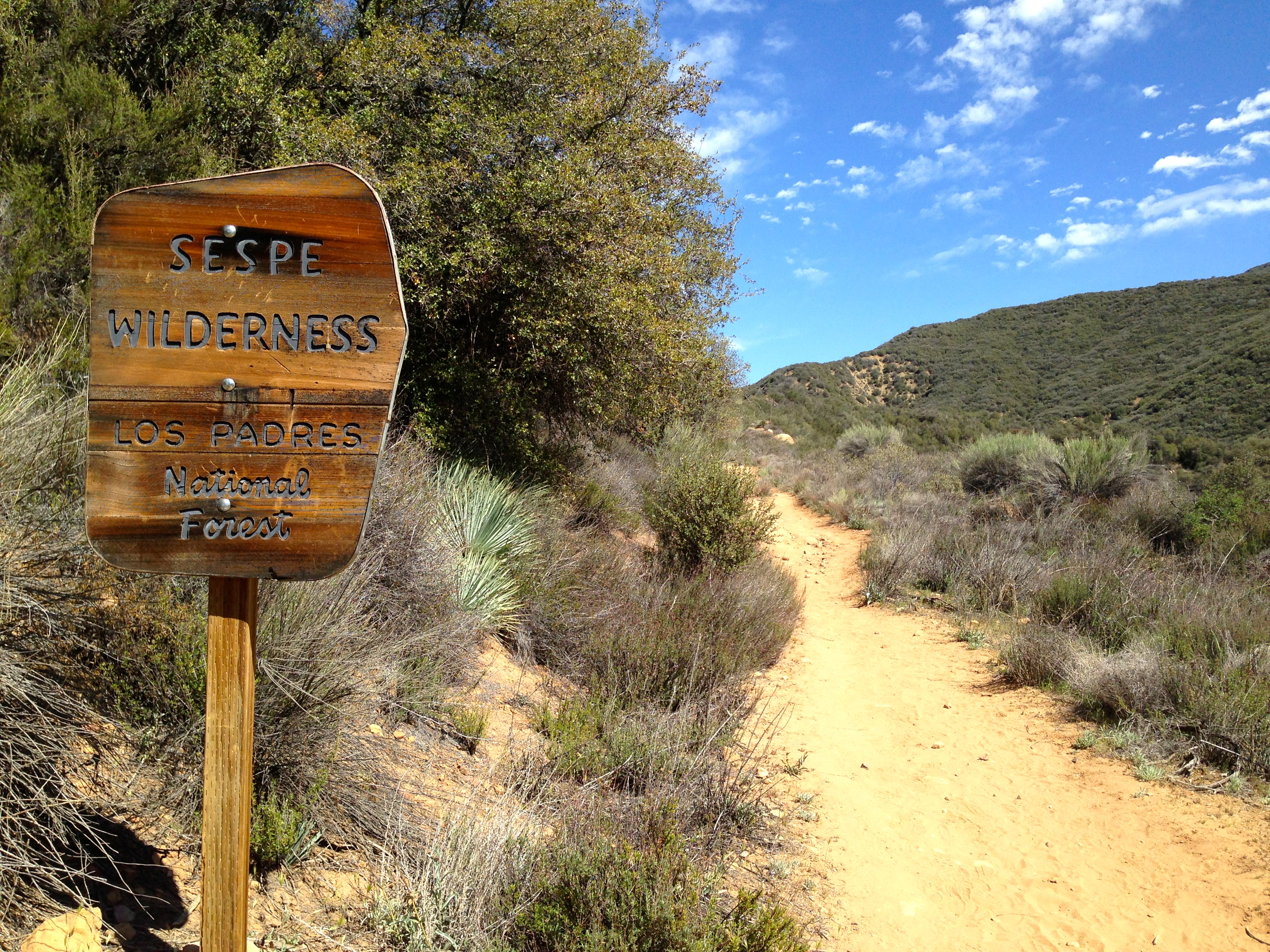
This rally in St. Paul, Minnesota, was one of the solidarity rallies happening around the world this day to show support for the protests against the Dakota Access Pipeline. Photo credit: Fibonacci Blue via Flickr. Licensed under CC 2.0.
For weeks, members of the Standing Rock Sioux Tribe have stood along the Missouri River protesting the construction of an oil pipeline running along the edge of the tribe’s reservation in North Dakota. The protest brought environmentalists and activists from all over the country and gained national attention as news spread through traditional media, as well as on social networks like Facebook and Twitter.
Opponents of the Dakota Access Pipeline scored a significant victory earlier this week when the Army Corps of Engineers announced it was denying a permit for the pipeline’s proposed route that would have the pipeline travel under Lake Oahe, a reservoir created by a dam on the river.
The announcement was welcomed by the protesters, who had spent months, often in a standoff with police in riot gear. The Army Corps of Engineers Assistant Secretary for Civil Works, Jo-Ellen Darcy, said in a statement, “The best way to complete that work responsibly and expeditiously is to explore alternate routes for the pipeline crossing.”
The pipeline was completed with the exception of the contested segment, which required an easement from the federal government. A decision on the easement request was delayed twice as discussions with the Standing Rock Sioux Tribe continued. However, the denial of the easement means the pipeline might end up being diverted around the tribe’s reservation.
While the Army Corps of Engineers decision gave protesters a reason to celebrate, the battle may not be over. Energy Transfer Partners LP, owners of the pipeline, stated they will complete the pipeline, and with President-elect Donald Trump considered a supporter, the company could soon be back at work on the last segment.
“With President-elect Trump set to take office in just a few weeks, we are hopeful that this is not the final word on the Dakota Access Pipeline,” said Craig Stevens, a spokesman for the group Midwest Alliance for Infrastructure Now, a supporter of the project.
Winter is coming to North Dakota, and officials have asked that protesters, especially those not used to the state’s harsh cold, leave the area. However, with the possibility looming that construction of the Dakota Access Pipeline may start during the Trump Administration, many expect the protests will start back up.
What do you think? Should the pipeline be completed, and do you believe it will be finished along the proposed route? Let us know in the comments.






Recent Comments